Develop a Blog with Rich Content
Hubspot has a reputation as a fantastic website with rich blog content. Their blogs include in-depth posts about things their users care about, as well as an educational content-sharing hub that promotes their certification and partnership programs to more than 300,000 visitors each month.
Your website is usually the first impression customers have of your business. A great website includes plenty of engaging content that keeps your customers focused on you — and not the competition.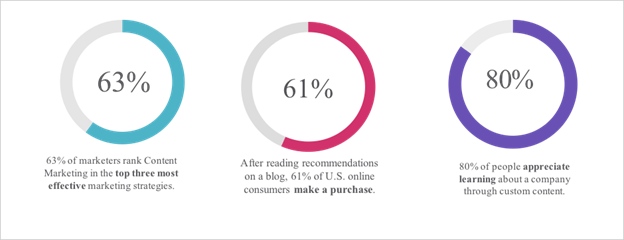
If you aren't web-savvy, WordPress has an easy-to-use interface that can help you build a scalable site capable of handling more traffic as your business grows. You may also wish to invest in a good web design and hosting service — these companies can monitor your site's security, ensure that you have enough broadband to support heavy use periods and can load fresh content and photos for you.
Your website should feature a blog, focusing on topics relevant to your business, the industry you're in, and any trends that customers may want to learn more about. Using your own expertise to create fresh content lends an air of authority to your business. Make sure when blogging that your content is relevant to your target customer. This can include how-to discussions, a behind-the-scenes look at your business, details about how your products are made or frequently asked questions about your services.
Embrace Social Media
Intrepid Travel Company integrates its own social media content with that of their customers. Their content hub, The Journal, includes real-life travel pictures and posts from their customers, helping the company connect and build relationships with their core audience.
Millennials and younger generations want companies that are relatable with a brand personality and transparent business dealings. In fact, there's an overwhelming mistrust of large corporations by the millennial generation, which has helped shift purchasing away from national brands and toward small, locally owned businesses like yours.
If you don't have the time or creativity to interact with fans that "@", like or retweet you, then consider hiring a social media management company to post on your behalf and interact with clients.
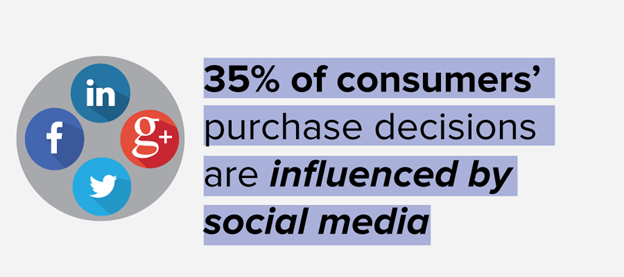
Your social media accounts can bring attention to your brand's blog with teasers on Twitter inviting users to read the full articles as they're posted, or Facebook posts that highlight your fresh content. Using Instagram to showcase new products is a popular idea, especially if you invite your customers to post on their own Instagram accounts wearing or using your products and tagging your brand in the post.
You may also consider using social media as a testing ground for new services or goods. Having a poll that users can take may help you determine what your customers want, and including their insights into your business helps build relationships between your brand and your clients.
Appeal Directly to Your Niche Customer
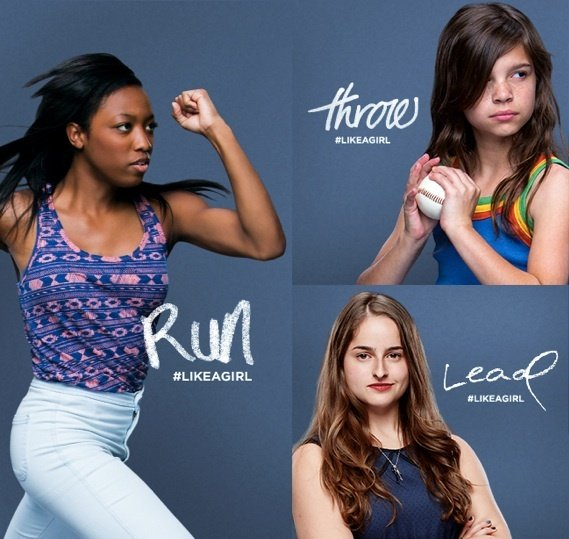
The Always "Like a Girl" advertising campaign is a good example of appealing to your customer base. The company noticed that they weren't resonating with the younger 16-24 age group. To combat this, they focused on something that matters to young women this age. The company noted that over half of girls quit sports during puberty due to a lack of confidence. Always chose to embrace the derogatory "like a girl" phrase and instead make it empowering to younger women.
Delivering messages as directly as possible to niche audiences like the one Always targeted increases their impact, and it’s why more marketers are turning to over-the-top (OTT) advertising. OTT ads sidestep TV providers in favor of streaming devices and services. Whereas traditional TV ads are capable of reaching a broader audience, OTT ads are better equipped to hit a more specific demographic, which can really maximize your ad spend.
Identify what your target customer profile is and then determine what their needs are. Once you've gotten a picture of what each demographic wants, you can present your company in a way that appeals to their needs and reaches them where they are.
Involve Your Customers in Marketing
The cosmetics company Glossier incorporates customer mentions into their own social media posts. When their products are mentioned by customers, the company reposts the tweet or photo on their own social media accounts with a shout-out to their customers.
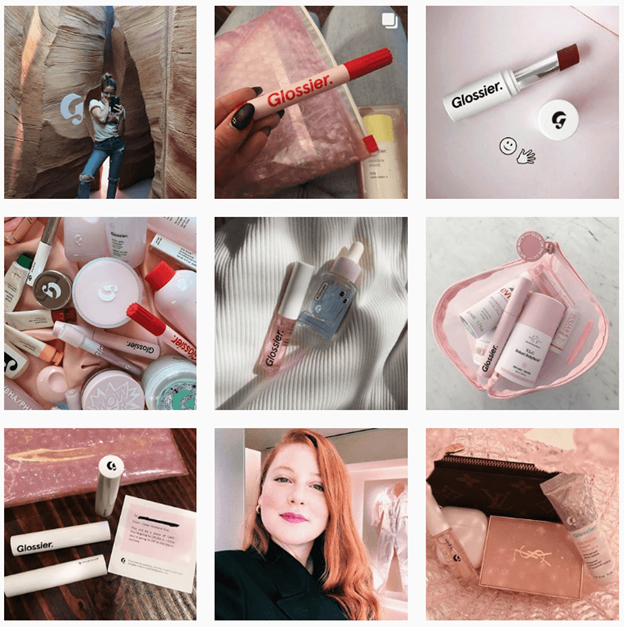
With a rich social media presence, you can allow your happy clients to do part of the marketing work for you. One creative idea is to invite users to share their own experiences on your site. Tagging your brand and your customers gives you a reach into a more peripheral audience — the fans and followers of your customers.
Inviting your customers to develop these relationships adds authenticity to your brand and makes your company approachable for new buyers. You may choose to post aspirational pictures from your customers interspersed with your own fresh content, making your pages lively and interesting, compared to simply posting adverts.
If your customers tag your business on their own social media sites, repost their posts on your own Facebook or Instagram account with a thank you or a compliment back. Most users enjoy being featured by the brands they like, and this helps you generate fresh content with little effort. As your engagement with clients gains traction, you may find that you'll have more users interacting with your company on social media and more fresh content. By seeing what your customers like enough to post about, you may also develop a different line of products or offer different services.
Create a Mascot
Vision care company OPSM successfully launched the Penny the Pirate mascot to help bring awareness to children in low-income households that may have vision problems. The pirate mascot helps guide parents through a video to identify vision problems that their child may have. This mascot has helped the company increase sales, providing eye tests for more than 300,000 children and increasing eyewear sales dramatically.
Choosing a mascot that represents your industry as the face of your brand adds recognizability and sets you apart from your competition. Consider some of the most iconic brand mascots, such as Ronald McDonald or the Energizer Bunny. These identifiable mascots are incorporated into the personality of their brands and act as a logo and advert simply by existing.
Many small businesses have plain, nondescript logos and plain, nondescript marketing. Choosing something to represent you in a fun, eye-catching way is a great first impression for your customers. Your mascot can be a brand amplifier — resonating with your customers and creating a timeless icon that captures the spirit of your business.
Branding your business with a mascot says something about your company before a customer ever engages with it. Mascots typically personify your company culture and are approachable to your target demographic. Keeping your values consistent throughout your branding and incorporating your company culture into the personality of your mascot can give you a relatable edge and improve your sales conversion rates, especially compared with using a celebrity or influencer endorsement.
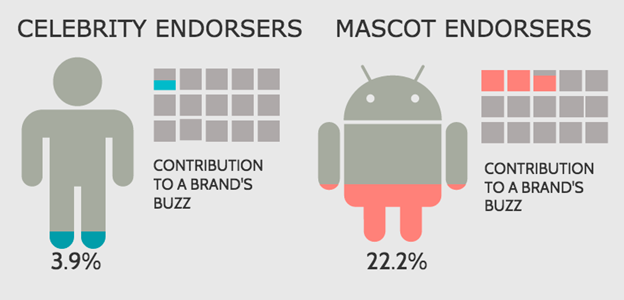
Your mascot may be a useful tool in some of your online content, including how-to videos or featured in photoshoots for your business. Tie your mascot to your overall brand message, including names, logos, taglines, and even calls-to-action. You may have a small animated mascot on your website as a chatbot, answering user questions and directing them to the information they need on your site. Your mascot can also have a social media presence, engaging on your behalf with customers.
Using your mascot as your spokesperson gives your business a personality. Your videos may be led by your mascot, and they may feature heavily in your marketing. Using the mascot to name certain products or service packages, such as a "honey bee" or "busy bee," adds a little more fun to a basic list of goods and services. You can even incorporate your mascot with your slogans and ad campaigns.
Rally Around a Cause
The fast-food giant Arby's has partnered with Share Our Strength, a charity that provides food for needy children. By asking customers to round up their change as a donation, the company was able to raise over $15 million last year for the foundation.
Some industries naturally lend themselves to supporting a charitable cause. For example, a restaurant may partner with a charity that provides food for the needy. A veterinarian may contribute pro-bono services to the local animal shelter.
When you've found your charity, make sure to incorporate it into your marketing materials. Depending on the group, you may need to petition to use their logos with yours, or you may approach the charity to see how your business can contribute, raise awareness or volunteer.
For small businesses seeking to rally around a cause, starting locally is a great way to plant deeper roots in your community. Partnering with a local charity can help raise visibility for both of you. You may even be in a position to ask your customers to round up their change as a donation to your sponsored charity, which can be a nice tax break for you, as well as a way to engage your clients with helping a local cause.
Another way you can use your sponsored charity to increase the visibility of both their cause and your brand is to encourage volunteering from your clients or your employees. You may have a day where you close up shop early and invite your employees and VIP customers to volunteer as a group. Things like adopting a highway are easy ways to have your name out there and make your community a little better. In fact, picking up trash around public areas in your community has gotten worldwide traction, with the hashtag #trashtag showing the “before and after” of cleaning up.

Incorporating your sponsored charity into your social media sites and your business's website gives your business more depth and adds to your brand's personality. The charity that you choose to donate your time and money to shows your customers what they can expect from your brand and your company values.
Use Videos and Multimedia
The blender company Blendtec has had remarkable success with their YouTube channel, putting different things into blenders and proving that even a "boring" industry can be fun and entertaining. With more than 800,000 subscribers, the company's sales are booming thanks to their creative shorts.
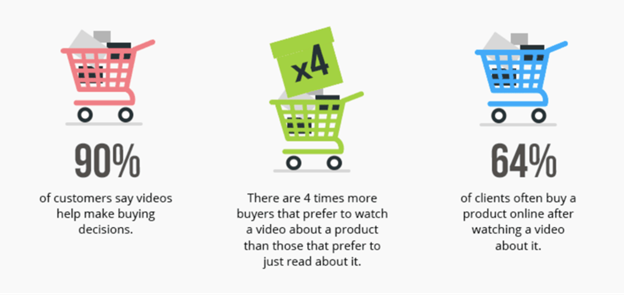
Did you know 64+ million millennials will watch brand-related videos at least once this month? Creating brand awareness through viral videos can be a good start, but you may want to consult with a professional advertising agency. Your brand has personality, and using that personality as a "hook" to increase views and shares of your video can push your visibility to new customers.
If you aren't featuring fresh videos on your website, consider incorporating them into your blog. Explaining how your service works, for example, can help your customers gain a better understanding when they shop with you. If you've developed a company mascot, consistently feature them in your videos. They can explain how things are made, how to use your products, or even just tell a little about your company story and your passion for your industry.
Invite your regular customers to shoot video testimonials that resonate with new buyers. If they've posted videos of themselves using your products on their own social media, ask permission to repost them on your website and your own social media accounts, giving your customer credit. Written reviews are great, but your product alongside the smiling face of a well-satisfied customer will carry some extra weight. People trust people and showing everyday people loving your business works as a virtual word-of-mouth recommendation.
Takeaway
Building brand recognition through developing your brand's personality can grow your business and help you reach out to new markets. Although your advertising budget may be small, using one or more of these techniques can help you develop a brand personality and bring your own company philosophy to the forefront of your marketing.
Your social media campaigns and web presence can be an effective, inexpensive way to build awareness of your business and incorporate your message into your advertising. Choosing a mascot and a sponsored charity gives your brand personality, one that can connect with your customers and set you apart from other businesses like yours.
